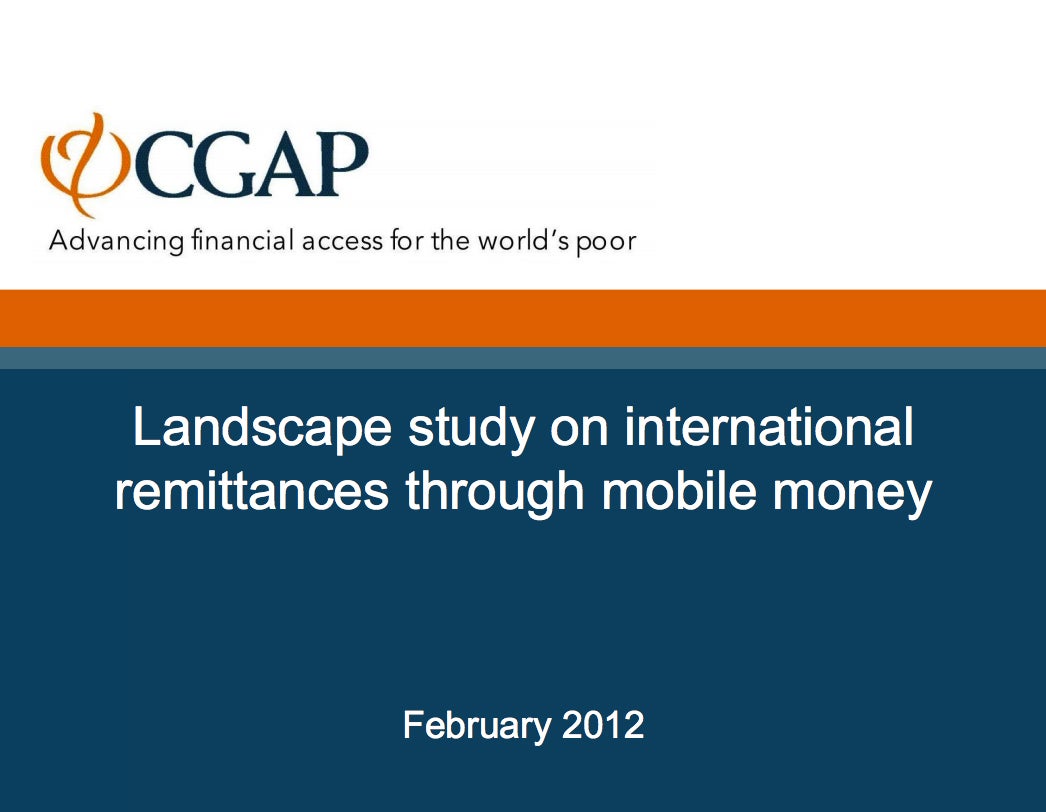Mobile International Remittances in the Philippines
Last week, we began a blog series and released a CGAP report on international remittances through mobile banking channels. The series continues this week with guest blogger Paolo Baltao, President of G-Xchange, Inc. (GXI), a wholly owned subsidiary of Globe Telecom in the Philippines. G-Xchange’s GCASH is one of the first mobile wallet services in the world and has been offering international remittances since 2004. In this post, Paolo shares some of the lessons GXI has learned in the past eight years.
My home country of the Philippines has a very strong culture of migration and nearly 1 in 10 Filipinos lives and works outside the country. As a result, we rely very heavily on international remittances. In fact, the Philippines is one of the top five recipients of remittances globally and receives about $19 billion of remittances a year. When we first started GCASH back in 2004, focusing our offering around international remittances seemed like a no-brainer. We thought this would be the low hanging fruit and the engine that would drive the domestic mobile wallet business and the roll-out of our agent network. We also thought that this product would be a natural one to attract unbanked customers and that it would be easy to get them to receive their remittances through the mobile wallet.
In our first years of operation, we put an enormous amount of time and energy into developing partnerships with almost 100 international remittance partners, enabling people in locations as diverse as Hong Kong, Singapore, United Arab Emirates, Qatar, UK, and the US to send money home via GCASH.
Unfortunately, despite all this potential and the network that we have built around the world, international remittances have not been the engine to drive customer adoption in the Philippines. A few key lessons we have learned are:
- A strong domestic ecosystem should be in place before launching international remittances – After many trials and error, we have learned that it is essential to first build a critical mass in the user base through the domestic mobile wallet business. According to the new CGAP study, it seems that this is a very common realization around the world. We faced many challenges in developing this product, especially customer education on both receiving and sending ends and building partnerships with money transfer operators around the world. International remittances are just not low-hanging fruit we initially thought and we spent a lot of time and effort trying to build the business that we now feel should have been focused on building a domestic ecosystem. A significant domestic ecosystem will allow users that eventually receive international remittances to conduct many “downstream” activities such as paying bills, domestic transfers and savings. Without this, it was hard to convince customers of the benefits of receiving funds through GCASH.
- Since customer education is so challenging, segment and target customers carefully – Customer education is one of the biggest challenges we face with GCASH in general and with international remittances specifically. We originally focused on the unbanked. However, customer education was very difficult and we have received better results when we learned to segment the market and prioritize those segments that are likely to be early adopters of a product like GCASH. These customers are more likely to be a subset of the unbanked that we deem “bankable”. This segment already uses non-traditional financial services but does not have bank accounts.
- Focus on key product offerings while working on total customer experience – Mind space is always a challenge and we learned to focus on less sophisticated offerings and perfect the customer experience for these before moving to more sophisticated products like international remittances. There is always the temptation to come up with many offerings all at the same time at the expense of good execution and consistent engagement of our market. We feel that longer term behavior change will happen incrementally rather than in a drastic shift – and this is what we are now trying to achieve.
At GXI, we still see huge potential in international remittances. In fact, we estimate that one in three of our customers (or a total of 300,000 people) have used the service to receive remittances. However, it’s not an easy road and we’ve refocused our efforts. My prediction is that international remittances will be a lagging application, not a leader, in the movement to bring banking to the bankable through mobile services.



Add new comment